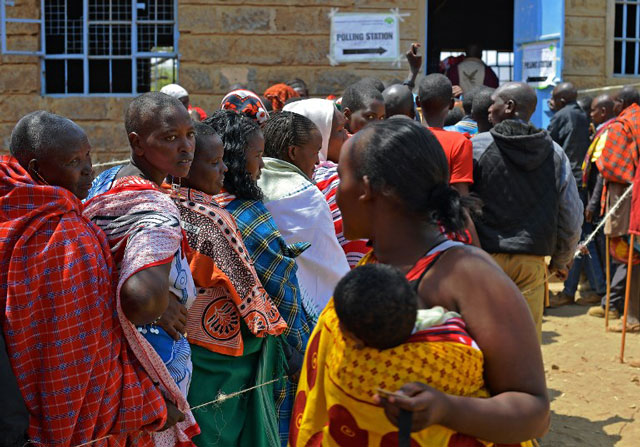
Nairobi, Kenya | AFP | The electronic voting system due to be used in a re-run of Kenya’s presidential poll will not be ready in time, the French biometrics firm behind it said Monday.
OT-Morpho provided Kenya’s Independent Electoral and Boundaries Commission (IEBC) with equipment to identify voters biometrically in the August 8 election.
The result of the vote was annulled by the Supreme Court, and a re-run has been scheduled for October 17, when the system is to be deployed again.
But in a statement, OT-Morpho cautioned that it was unable to deploy the same equipment that was used on August 8.
It was leaving the computer system and its data untouched to enable a possible external audit, in the light of the disputed outcome, it said.
“As a consequence, in the scope of the fresh elections, OT-Morpho has to reinstall a fresh new RTS system as well as all 45,000 KIEMS kits,” it said, referring to the computer system for transmitting provisional results and to the laptops used for biometric ID.
“This represents a very significant amount of work, which can not be secured by October 17th,” the company said, adding it had “previously informed the IEBC of this information.”
The opposition, whose leader Raila Odinga lost out to incumbent President Uhuru Kenyatta, has alleged that the August vote was rigged and the electronic vote-tallying system was hacked.
OT-Morpho, in its statement on Monday, reiterated that an internal audit of its system showed no intrusion or manipulation of data.
It repeated that it was willing to have its equipment scrutinised “as quickly as possible” by outside experts, working under the IEBC’s authority.
Voting on August 8 was carried out on ballot papers that were then manually counted. The results were then collected electronically, backed on paper by so-called 34A tallying forms.
But the opposition said many 34A forms were delayed and often had not been signed or stamped, or were illegible or lacked serial numbers or watermarks.
OT-Morpho pointed to a further hurdle in its ability to collaborate in the October rerun — “the detailed conclusions of the Supreme Court, specially on the technical aspects of the systems, which are still unknown at this time.”
Odinga has threatened to boycott the re-run, notably unless several IEBC members step aside, insisting the transmission system inflated Kenyatta’s score.
Under Kenya’s constitution, the IEBC has until October 31 to hold the new election.
It was the first time a presidential election result has been overturned on Africa, and follows three previous failed bids by 72-year-old Odinga for the presidency — in 1997, 2007 and 2013.
After the 2007 vote, Odinga’s supporters took to the streets, and a resulting crackdown coupled with a wave of politically motivated tribal violence left over 1,100 dead.
 The Independent Uganda: You get the Truth we Pay the Price
The Independent Uganda: You get the Truth we Pay the Price



